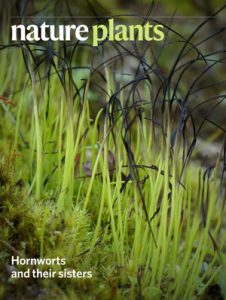 The first hornwort genome is now published, filling a major gap in the survey of genomes of major lineages of land plants. This project was led by collaborators of the Chinese Academy of Sciences, Beijing, China.
The first hornwort genome is now published, filling a major gap in the survey of genomes of major lineages of land plants. This project was led by collaborators of the Chinese Academy of Sciences, Beijing, China.
Zhang J., X.-X. Fu, R.-Q. Li, X. Zhao, Y. Liu, M.-H. Li, A. Zwaenepoel, H. Ma, B. Goffinet, Y.-L. Guan, J.-Y. Xue, Y.-Y. Liao, Q.-F. Wang, Q.-H. Wang,Q.-H. Wang, J.-Y. Wang, G.-Q. Zhang, Z.-W. Wang, Y. Jia, M.-Z. Wang, S.-S. Dong, J.-F. Yang, Y.-N. Jiao, Y.-L. Guo, H.-Z. Kong, A.-M. Lu, S.-Z. Zhang, Y. Van de Peer, Z.-J. Liu & Z.-D. Chen. 2020. The hornwort genome and early land plant evolution. Nature Plants (2020). pdf or here.
Abstract reads: Hornworts, liverworts and mosses are three early diverging clades of land plants, and together comprise the bryophytes. Here, we report the draft genome sequence of the hornwort. Phylogenomic inferences confirm the monophyly of bryophytes, with hornworts sister to liverworts and mosses. The simple morphology of hornworts correlates with low genetic redundancy in plant body plan, while the basic transcriptional regulation toolkit for plant development has already been established in this early land plant lineage. Although the Anthoceros genome is small and characterized by minimal redundancy, expansions are observed in gene families related to RNA editing, UV protection and desiccation tolerance. The genome of A. angustus bears the signatures of horizontally transferred genes from bacteria and fungi, in particular of genes operating in stress-response and metabolic pathways. Our study provides insight into the unique features of hornworts and their molecular adaptations to live on land.